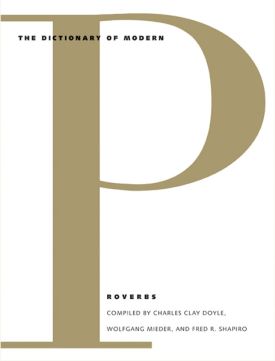Bioethics at the Movies
From The New Atlantis“Whose Life is it Anyway?” Brian Clark’s play of that name about a quadriplegic who wants to die is now over 30 years old — it started as a BBC television play in 1972 — and has just had a sex-change with its latest revival in the West End of London. A whole new line of argument about the awfulness of paralysis and the right of the paralyzed to take their own lives is suggested by putting Kim Cattrall into the starring role played by Tom Conti in the original London stage production of 1978 and Richard Dreyfus in the film version of 1981. The piquancy of the casting of Miss Cattrall in the role of an American sculptress who is paralyzed in an accident lies in the audience’s presumed familiarity with her as saucy, sexy Samantha in the HBO series “Sex and the City.” Accordingly, in her new role she calls attention to her own, still voluptuous but now shattered sexuality in order to add a new dimension of poignancy to the question of what it is that makes life worth living. Or not worth living. But before that question can be answered, there is the prior question of the play’s title, whose answer is more easily assumed than explored.
For what has made this play what they call “a perennial crowd-pleaser” in spite of some critics’ complaints that it is too one-sided, less a debate than a lecture, is the assumption that theatre audiences will automatically answer that their lives are their own — as indeed they generally do. It’s not clear whether Mr Clark or the many fans of his play even recognize that there is another answer — which is perhaps another reason for the casting of Miss Cattrall. Fans of Samantha know that she is no stranger to emphatic assertions of proprietorship, if not propriety, in her life, and her sexual promiscuity in “Sex and the City” amounted in the eyes of many, including herself, to a feminist statement. There too she was asking “Whose life is it anyway?” in response to patriarchal notions of female sexuality as a male possession — which is the political way of characterizing the expectation (among both males and females, by the way, who are equally susceptible to infection by patriarchal values) of female chastity and fidelity. There too, where the question arises of whose life it is, the answer is increasingly supposed to be that it is the woman’s own.
Moreover, the assertion of proprietorship in her life in the two cases would be seen by many feminists to be connected, since the patriarchy is represented both by the father or husband who demands chastity or fidelity and the God of traditional religious belief who forbids suicide — besides, of course, also expecting chastity and fidelity. I think that those who would make this connection are right to do so, because it reminds us that not only are questions of sexual morality and euthanasia thus connected, so are a whole range of moral issues, including that of abortion, by this same question of ownership which divides the house, as one may say, between theism and atheism. Atheists will naturally assume that their lives are their own — Who else’s would they be? — while theists will with somewhat less predictability assume that, as they have learned to regard their lives as gifts from God, they cannot therefore be their own to do with as they wish. From the answer to this question all else follows. Belief in a Creator-God entails belief in a purpose to His creation. And if creation, particularly the creation of life, has a purpose then it is very hard indeed not to suppose that our lives are given to us with the purposes of the Creator in mind and not as absolute possessions to do with as we like.
Let us stipulate for the purpose of argument that there are ways around this dilemma, and that it is possible for someone to believe in God without believing that God retains any interest in our lives — either how we conduct them or how we end them. It may be that He has given them to us freehold rather than leasehold. It is also possible, of course, for tender-hearted atheists to express a concern for innocent life in the womb, restraint in the exercise of sexuality or even the social dangers of euthanasia and assisted suicide, since it is easy to imagine that, once euthanasia became legal, pressure would grow on the old and the infirm to take this way out of becoming a burden on loved ones, or on the state. But in practice the libertarian position on these issues tends to go with practical atheism — by which I mean to include deism or other forms of theism that exempt their god from involvement in human life — just as the upholders of traditional restrictions tend to be religious believers, if not necessarily those who still uphold the long history of religious strictures against unchastity, abortion or suicide.
American popular culture in general and Hollywood in particular is naturally libertarian in its sympathies, but it has a particular interest in keeping these connections out of sight of its audience, which includes a big majority of religious believers. There is at the very heart of it, therefore, a form of dishonesty. This involves an attempt to pretend that property, in which Americans also tend to be strong believers, is the inevitable metaphor for their stake in their own lives, and that there is no question of any liens upon such property held by the Almighty. Practically, this deception takes a slightly different form in each of the three cases. With respect to sexual behavior, morality is transformed into “repression,” a useful idea derived from vulgar Freudianism. With respect to abortion, morality is replaced by “choice” — a metaphor from the market economy (also popular in America) and exploited for all it is worth by the advocates of legal abortion — even though the actual choice on screen is often to have the baby. And when it comes to euthanasia or assisted suicide, morality’s substitute is “compassion” — presumed to be a moral quality itself which trumps all others.
 |
In each of these cases, American popular culture has taken its lead from European (and American) high culture, but the peculiarities of the American market are such that it seems to strike a much more strident, unbalanced even propagandistic note than European films. In Kinsey, for instance, the hagiographical biopic by Bill Condon about the famous sex-researcher from Indiana University, there is not an inch of daylight between Professor Alfred Kinsey’s assumptions about the world and the film’s. As played by Liam Neeson, Professor Kinsey has a few flaws, a few weaknesses, a few blind-spots, but never for a single moment is there allowed the shadow of a doubt that he is right in his central mission to decouple sex from morality. In morality’s place we have the “normal,” and Kinsey is a hymn to the normal. The professor showed that by a simple statistical trick you could pronounce almost anything “normal” — that is, something that lots of people do — and in so doing you could make it look all right, especially in the era of post-war conformity.
“Everybody’s sin is nobody’s sin,” the professor says, exploiting the very forces of “repression” that he was simultaneously outraging. For middle-class “respectability” was also founded on a deception, namely that what was in fact fairly common rarely or never happened among decent, respectable people. Kinsey’s feat amounted to a sort of intellectual ju-jitsu, and ever since his time normal has taken the place of its near anagram, moral in the popular imagination and in the popular entertainments that appeal to it. In fact, we might do well to coin a word, n’moral, to describe the thing that is neither moral nor immoral nor even amoral but outside the universe in which morality could make its appeal on any grounds other than that of normality. Half a century on, we might have expected to be at a sufficient distance from the passions of the 1950s to take at least a slightly more critical look at such dubious assumptions, but Mr Condon’s film suggests not. There is just one moment in it when there is a hint of irony. It comes when the eldest Kinsey son, played by Luke MacFarlane, reacts against the family’s frank talk of sex around the dinner table: “Could we talk about something else for once?” he asks. None of his friends’ families have such conversations, and he thinks it not normal.
But what seems to be a turning of his concept of the “normal” against himself is really only another affirmation of his central principle: that the allegedly abnormal is really normal if people only loosen up. Likewise, Kinsey’s one encounter with a genuine pervert and sexual predator may test the limits of his tolerance, but it ultimately reaffirms his celebration of the normal. Even the movie’s infidelity, wife-swapping, and sexual experimentation are treated with a Kinseyesque indulgence. This is not a film to make anyone think about the hard questions of sexual morality. It is, rather, a triumphalist assertion, or re-assertion, of the cultural consensus of the last 40 years — to which even most religious believers quietly assent — that there is no such thing as sexual morality apart from questions of personal loyalty. The idea of the sexual act as having any moral status simply as such — as something decreed by God in certain situations and forbidden by God in others — has simply washed out of the cultural consciousness and been replaced with a grateful sense that it’s only to do with mental and physical hygiene and the establishment of fulfilling romantic “relationships.”
 |
Something similar has happened, or is on the point of happening, with abortion. At least it has if we are to judge by last year’s re-make of Alfie by Charles Shyer. Anyone who saw the original Alfie, directed by Lewis Gilbert from a play and screenplay by Bill Naughton on the very point of the sexual revolution in 1966 will never forget the encounter between its womanizing hero, played by Michael Caine in what is perhaps still his greatest role, and an abortionist, played by Denholm Elliott. The sight of the aborted fetus taken from his married lover (played by the first Mrs Harold Pinter, Vivien Merchant) stuns him into a sudden albeit brief understanding that what he has grown accustomed to consider as being merely recreational sex has a transcendental dimension hitherto unsuspected by him. In the re-make, it is very much easier for the new Alfie (Jude Law). He accompanies his sexual partner (Nia Long) to the abortionist’s, makes a rueful expression of sentimental regret at the death of his child and is later shocked to discover that she has decided to bear it after all. But because theirs was an inter-racial coupling, it has also become obvious to the woman’s husband and Alfie’s best friend (Omar Epps) who the father was.
As in the original, Alfie is shaken up though not permanently changed by his moment of insight. But the nature of that insight is utterly different. Instead of putting his own desires into the context of a larger moral universe, it can only pit one desire against another, sexual pleasure versus friendship. Obviously, the passage of nearly 40 years — years which have not been socially and morally uneventful — has had a lot to do with what can be represented cinematically. Michael Caine himself has since played an avuncular, kind-hearted abortionist in Lasse Hallstrom’s adpatation of John Irving’s novel, The Cider House Rules (1999). But I think that there is also a process of Americanization going on in the new Alfie, and not only because its setting has been changed from London to New York.
Released at about the same time was Vera Drake by the English director Mike Leigh which, though it is by no means anti-abortion, takes a much more honest look at the subject than anything we have seen in the American cinema. Set in the grim post-war London of 1951, it puts its eponymous heroine, a sympathetic abortionist played by Imelda Staunton, into a context of what looks from our perspective to be set of rigid moral, social and emotional constraints, but it doesn’t patronize her except to the extent that it treats her as a victim of the hypocrisies of the ruling class. Yet in spite of Leigh’s strongly held left-wing views, one comes away from his movie with more of an appreciation of his characters’ moral sensibilities — they can’t even bring themselves to say the word “abortion,” and the abortionist herself never experiences the slightest doubt that what she has been doing is wrong — than of their political predicament. To Leigh too, though one presumes he is pro-choice, abortion is at least a live moral issue, and I wonder if this has anything to do with his exemption from the American cultural (and political) imperative never to admit this?
 |
I am emboldened to ask the question partly because I see something similar going on in two recent films, one European and one American, about assisted suicide. The title of Alejandro Amenábar’s Mar Adentro is idiomatic Spanish for “out to sea,” but its literalist and rather solipsistic American title was The Sea Inside. It tells the true story of a Galician sailor named Ramón Sampedro, played in the film by Javier Bardem, who 26 years after being paralyzed from the neck down in a diving accident, brought a case in the Spanish courts seeking the right to end his life. He lost the case but soon afterwards persuaded a group of friends to give him the assistance he needed. There is a sequence in the film in which he imagines himself restored to the use of his limbs and then some, as he seems to soar like a gull over the beautiful Spanish coastline near his home. Obviously the former sea-farer is putting “out to sea” in the Tennysonian sense by the end (“Sunset and evening star/And one clear call for me!/And may there be no moaning of the bar,/When I put out to sea”), but the translator’s error suggesting proprietorial worlds within the bed-bound Ramón also has its appropriateness.
“Life is a privilege, not an obligation,” the film quotes him as saying, but the authority for such a judgment is only his own. As the god of the world within, he naturally also takes on the role of law-giver. Amenábar is entirely sympathetic to him and the principle by which he proposes to die, and yet he is too good a film-maker to allow his picture to become mere propaganda. The fact that, during his years in bed, Sampedro has become a painter (the brush held in his teeth) and a poet, that he has written a best-selling book, that he has strong ties of love to his family who are bitterly divided about his decision and ultimately force him out of his home in order to carry it out — all these things together with the remarkably accomplished performace of Mr Bardem show a subtlety in the treatment of a complex moral issue that the American film and Academy Award nominee Million Dollar Baby completely lacks. Clint Eastwood’s mawkish treatment of his quadriplegic heroine, the much-too-pathetic female boxer played by Hilary Swank, leaves no room for any doubt about the rightness of her choice to die. Brought up in poverty and without any opportunity for cultivation, she knows how to do nothing but box, and her family cares for her only to the extent that they hope to enrich themselves by her.
Yet the two films do have something in common besides the infirmity of their protagonists and their advocacy of assisted suicide, and that is the presence in both of a Catholic priest who is meant to serve as the voice of traditional and Christian morality. Eastwood’s priest (Brian F. O’Byrne), like everything else in his film, is one-dimensional and without intrinsic interest. He is a walking moral precept whose advice to the suicide-assisting hero, played by Eastwood himself, that as a result of his deed he will be “lost” and “will never find yourself again” is meant to be redolent of the old-fashioned Church’s language of hell and damnation. In the same way, Eastwood’s choice to disregard that advice naturally suggests a romantic, Promethean defiance of the nay-saying and oppressive gods. Amenábar is again more subtle, but also more political. His priest (José María Pou) is a quadriplegic himself who, unable to get his wheelchair up the narrow steps to Sampedro’s bedroom, conducts his catechism with the would-be suicide by shouting up from the bottom of the stairs.
Our understanding of the difficulty of communication between the two cannot but be colored by the fact that it is Sampedro who is speaking, quite literally, de haut en bas when he scornfully rejects Father Francisco’s and the Church’s authority. And there is something about the latter’s position at the foot of the stairs which suggests a medieval devil in the cellarage.Yet this is rather ingeniously — if not implausibly, given the current state of the Roman Catholic church in many parts of the world — couched in Marxist terms. The idea, says the priest, that one’s life is one’s own to do with as one pleases is really just an extension of the bourgeois desire for possession. Just as the capitalist appropriates communal property as his own, so the suicide takes an illegitimate proprietorship in what rightly belongs to God. Ramon, obviously a leftist in the Spanish anti-clerical tradition, is meant to be given pause but instead merely brushes the argument aside by ridiculing the idea that it comes from the church, which every communist knows has always been capital’s lackey. Yet the question of ownership is left “out there” as it is not in Million Dollar Baby. Eastwood’s politics are libertarian rather than Marxist, and questions as to the ownership of his protagonist’s life simply don’t arise.
Finding himself under attack from some conservatives, however, both Eastwood and his apologists have been moved to deny that his film advocates assisted suicide at all. There are two possible explanations for such an extraordinary denial of the obvious. One is sheer disingenuousness. The cultural left in America has enjoyed an unparalleled ascendancy for 40 years, but it has never ceased to see itself as an embattled minority whose strategy since the dark days of what now goes under the name of McCarthyism has been to deny and to deny and to deny again that it holds the beliefs it actually does hold. The other possibility is that the mantra of “choice” has been repeated so often that those who repeat it have ceased to recognize even the possibility that some choices are morally fraught. Clint Eastwood may really think — living in Hollywood does seem to have a debilitating effect on the cognitive capacity after all — that the mere act of representing two sympathetic characters making a choice is enough to remove that choice and his own implicit endorsement of it from the moral realm altogether. Either way it would seem to be bad news for anyone in America who hopes to re-open the question of Whose life is it anyway?
Discover more from James Bowman
Subscribe to get the latest posts to your email.







